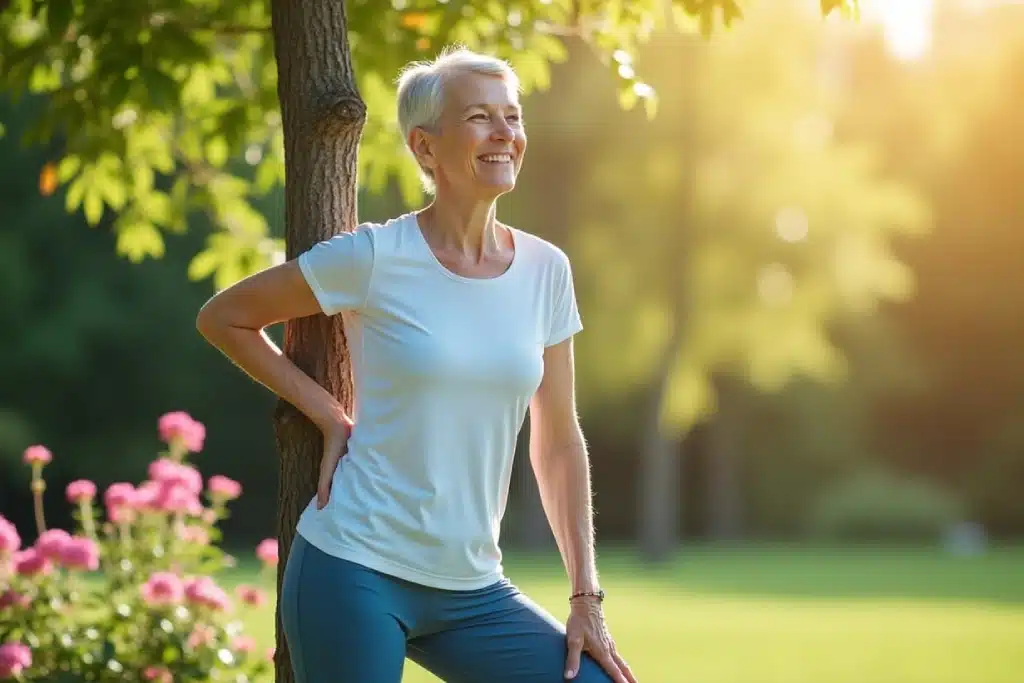As we age, many of us experience stiffness in our hips, discomfort in the lower back, and reduced mobility. One of the lesser-known—but powerful—ways to combat these issues is through hip flexor stretching. These muscles play a crucial role in walking, standing, and even posture. When they tighten due to aging, sitting too long, or lack of activity, they can cause pain and limit our ability to move freely.
Daily hip flexor stretches can help improve flexibility, reduce pain, and support active aging.
Why Hip Flexors Matter As You Age
Hip flexors are a group of muscles at the front of your hip. They help you:
- Lift your knees
- Bend at the waist
- Stabilize your pelvis and spine during walking or standing
As people grow older, these muscles often become shortened and weak—especially if you sit for long periods. This leads to:
- Tightness and discomfort
- Poor posture and balance
- Increased risk of falls or lower back pain
Stretching keeps these muscles strong, lengthened, and mobile—allowing you to move with confidence as you age.
Top Hip Flexor Stretches for Aging Adults
These gentle stretches are perfect for seniors or anyone wanting to stay mobile and strong:
1. Bridge Pose
- Lie on your back with knees bent and feet flat.
- Press through your heels to lift your hips toward the ceiling.
- Squeeze your glutes and hold for 5–10 seconds before lowering.
Why it works: This stretch activates the glutes and extends the hip flexors, reversing hours of sitting.
2. Seated Knee Lifts
- Sit on a chair with your back straight and feet flat.
- Lift one knee toward your chest, hold for a few seconds, and lower.
- Repeat on the other side.
Benefit: Strengthens hip flexors safely, especially helpful for those with balance issues.
3. Standing Hip Stretch
- Stand in a lunge position with one foot forward and one behind.
- Slightly tuck your pelvis under and gently lean forward.
- Feel a stretch in the front of your back leg’s hip.
Why it helps: Opens tight hip flexors and improves range of motion.
4. Low Lunge Stretch
- Start in a lunge with your back knee on the floor.
- Keep your chest tall and shift your weight forward until you feel a deep stretch.
Tip: Hold for 30–60 seconds per side to get the most benefit.
5. Leg Swings
- Stand beside a chair or wall for support.
- Swing one leg forward and back in a slow, controlled motion.
- Repeat 10–15 times on each side.
Benefit: Helps improve hip joint mobility and loosen surrounding muscles.
How Often Should You Stretch?
Experts recommend:
- 2–3 sets per stretch
- Hold each position for at least 30–60 seconds
- Repeat stretches 4–5 times per week
Stretching regularly improves flexibility gradually. Be patient and consistent. You may begin noticing improvements in posture, pain reduction, and overall movement within a few weeks.
Safety Tips for Older Adults
- Always warm up lightly before stretching (marching in place or walking works well)
- Stretch in a quiet, stable space with support nearby if needed
- Never push into pain—gentle tension is enough
- If you have joint replacements, recent injuries, or chronic pain, consult a doctor or physical therapist first
Start small and progress slowly—consistency is more important than intensity.
The Long-Term Benefits of Hip Flexor Stretching
Regularly stretching your hip flexors can lead to:
- Improved posture and spinal alignment
- Better balance and reduced fall risk
- Less pressure on knees and lower back
- Increased confidence in daily movements like walking, standing up, or getting out of a car
It’s not about flexibility alone—it’s about independence.
Final Thought
Tight hips are not just a sign of aging—they’re a sign of underuse. But you can change that. By adding just 10 minutes of hip flexor stretching to your daily routine, you’re investing in your long-term mobility, comfort, and confidence.
You’re never too old to start—and the sooner you begin, the better you’ll feel.


